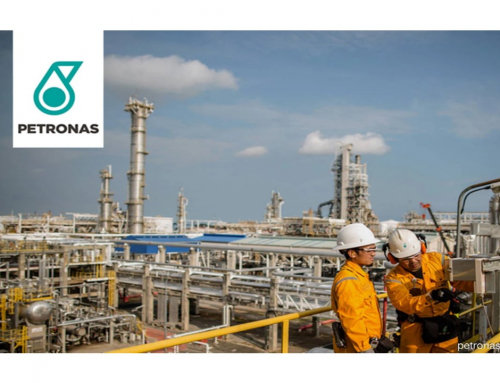Genovasi, a part of the government’s Agensi Inovasi Malaysia, is encouraging young working executives to go back to class to retool. No, it is not going to be about textbooks and exams all over again.
This is about design thinking, or what Genovasi describes as a human-centred approach to innovation.
What design thinking does is that it ‘employs multidisciplinary teams, flexible environments and a creative process to generate user-focused products, services or experiences’.
This method can be used by individuals to tackle challenges or by organisations that want to develop a business strategy.
Genovasi runs two design thinking programmes: a three-day boot camp called The Design Thinking Bootcamp and the Innovation Ambassador Development Programme (IADP), which has part-time and full-time options.
Young executives Marcus Lee and Ahmad Kamal Benjamin graduated from the IADP recently. Both say the things they learnt have been useful to their work.
They also say it is a great place to meet people who share a similar philosophy of making this world a better place to live in. This is because the participants come from different educational and working backgrounds.
There, fresh graduates, web designers, engineers, auditors, copywriters and young executives think and work together.
Ahmad Kamal Benjamin’s experience
Ahmad Kamal, a 24-year-old business management graduate, enrolled in the programme after being persuaded by a friend. His aim was to sharpen his innovative and entrepreneurial mind.
He says the IADP has benefited him in two ways. First of all, it provided him with methodology tools, which are versatile enough to be used in different situations.
Secondly, the ’12 Commandments in Design Thinking’, which are rules for brainstorming and ideation, also come in handy.
‘The 12 Commandments have helped me interact with people better because one of the rules is to accept criticism and to build on the ideas of others. They encourage teamwork and, through multidisciplinary approach, get different minds to come up with one or several superb ideas,’ Ahmad Kamal says.
During this course, he and the other participants were required to tackle a few assigned challenges.
One of them required his group to come up with an idea for a company to increase the foot traffic to its sales booth. The company’s problem was in its marketing approach.
The solution? Ahmad Kamal’s group proposed that the company turned its sales booth into a lounge.
‘We have to get people in first, make them comfortable and then start our sales pitch. The company adopted this idea for its shop at klia2.’
‘So, that’s one great thing about it. If companies like our ideas, they will come and work with us,’ says Ahmad Kamal.
After completing the 20-day full time IADP, Ahmad Kamal now works as a part-time coach for the programme.
A by-product of his time at the IADP is that he got to work on a security mobile app that functions like a social platform.
So far, he has created a low-resolution prototype and carried out several tests. ‘I went through the design thinking process and came up with this product. Then I found out that the technology didn’t really match it, so I went back to the drawing board, came up with a new app.’
Marcus Lee’s experience
Lee, 26, works for a telecommunications provider. He found out about the IADP from a colleague who has undergone the programme.
Lee has been handling his company’s mobile application portfolio for nearly two years now. He says the design thinking approach helped him gain a deeper insight into the needs of the end-user when developing mobile applications.
‘Just spending 10 weeks with Genovasi broadened my horizons. It was about taking some simple ideas that seem outlandish, then finding an issue, breaking down certain assumptions and making things work,’ he says.
During the programme, Lee and his course mates were required to solve a hypothetical transport problem. One group proposed teleportation as the solution.
‘Scientifically, there’s no such thing, but the whole idea of you just ideating it seems like it would be something people would use, want to do or try. It’s just creating ideas to develop something… something we have never thought about before,’ Lee says.
When he returned to work, Lee implemented the design thinking elements in his meetings. The dull three-hour-long meetings became more interactive and engaging.
‘Most of the time, those at the meetings were not engaged and they became unproductive. So, we took the drastic approach of asking them to come up with ideas and put them on a white board,’ he says.
‘Getting people involved makes them stay engaged longer.’
Ten weeks may seem like a long duration for some, but Lee says it worked out well for him as he spent two days a week (for 10 weeks) on the programme instead of a stretch of 20 days for the full-time programme.
He recalls a memorable experience during the programme where the participants visited a primary school in Janda Baik, Pahang.
The innovative ambassadors had been asked to come up with ideas to improve the visibility of local artistes. Lee says they initially wanted to create a music app, but later decided that it might not be the best solution.
‘We dug deeper. It wasn’t so much about discovering music but people’s understanding and attitude towards music, what they feel is good music. What we learnt was that children have the ability to absorb things and you just need to encourage them at that level,’ Lee says.
More about the programme
Genovasi CEO Carol Wong says the aim of the IADP is to build up the human capital and ecosystem in Malaysia.
The agency works with the Hasso Plattner Institute of Design at Stanford University’s Design School and the HPI School of Design Thinking, Germany, to create its modules, which encompass six basic steps of design thinking – understand, observe, point of view, ideate, prototype and test.
‘Some of our graduates have successfully started their own business, This programme helps enhance the skills of our undergraduates in solving real- life problems,’ says Wong.
The programme is open to Malaysian below the age of 35 with a basic degree or are currently in university. It is free of charge.
There are four intakes each year. Each intake will have up to 200 participants ad the size of the classes is between 40 and 50.
To date, 600 have graduated from the programme.
The course is conducted by 10 full-time and 40 part-time coaches.
Wong stresses that the learning process is not done in a normal classroom setting. It is interactive and sometimes, participants have to go one field trips to familiarise themselves with real-life situations.






